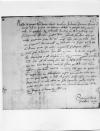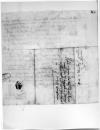Nobili et egregio viro, domino ⌊Ioanni Dantisco⌋, doctori, serenissimi ⌊regis Poloniae⌋ secretario et nuntio apud ⌊caesaream maiestatem⌋, amico et tanquam fratri carissimo
Nobilis et egregie Domine Doctor, amice carissime. Salutatione fraterna praemissa etc.
Accepi litteras vestras, quibus me certiorem reddidistis de perceptis calamitatibus vestris et praesertim ex vulneratione servitoris vestri. Id et quodcumque Vestrae Humanitati adversum contigerit doleo. Retuli hac hora ⌊caesari⌋, qua mihi praesentatae sunt litterae vestrae. ⌊Eius maiestas⌋ satis aegre tulit. Attamen non suspicatur haec evenisse ex instinctu aut iussu domini ⌊de Els⌋, cum ad eius petita quasi nullum inconveniens susceperit responsum. ⌊Maiestas sua⌋ deliberavit hanc causam committere et admittit, ut possitis illic aliquantisper et ad beneplacitum suae maiestatis permanere. De provisione autem vestra nihil omnino reticui suae maiestati et desuper petiit memoriale[1]. Ego non dimittam, quin mecum (si saltem possibile erit) responsum offeram. ⌊Sua maiestas⌋ utetur etiam in brevi vestra opera ut prius etc.[2] Et ex quo iam tot arduissima negotia prae manibus sunt, ut et ego non potui expediri[3] et litteras vel commisionem[4] ad ipsum ⌊magistrum curiae⌋, quamvis scriptae sunt, tamen non potui efficere, ut hodie signasset. Nolui tamen has postas abire sine meis litteris. Iam non plura, si bono animo sitis.
Valete.
Ex ⌊Bregnitz⌋, 4 Novembris anno 1516.
⌊Sigismundus de Herberstain⌋, eques.
[1 ] For more on this memorandum, see ⌊⌋, footnote 6
[2 ] Cf. ⌊⌋, footnote 1
[3 ] This most likely refers to Herberstein’s mission to Poland and Muscovy (cf. ⌊⌋, footnote 7)
[4 ] Dantiscus speaks of this order as a mandate to the court steward in ⌊⌋, see footnotes 4 and 7

